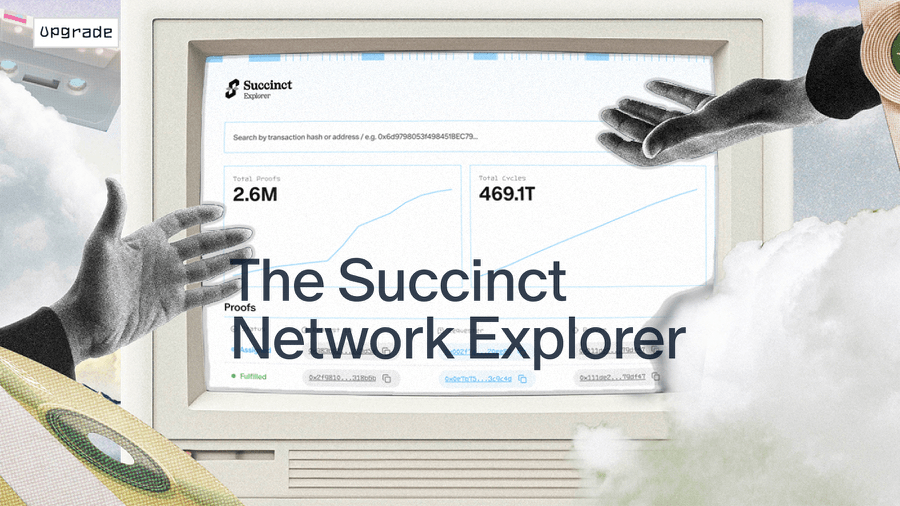The reasons for the price increase have been found, brothers.
In the past few years, a term has become quite popular in the crypto circle: Zero-Knowledge Proof (ZKP). It sounds impressive, but many people feel their scalp tingle just from hearing the name, feeling like they are not trading coins but taking a graduate-level math exam. Developers who want to use it need to understand circuits and write constraints, which is as painful as writing functions in Excel until they vomit.
The emergence of Succinct is like bringing this highbrow technology into a 'Didi taxi' app: developers just need to click a button, hang up tasks, and immediately have a bunch of 'drivers' (Provers) ready to grab orders and run tasks, ultimately delivering the proof to you, saving time and effort. What you want is just the result, not the process.
This is the magic of Succinct: democratizing ZK.
1. Core highlights: three keywords.
1. SP1 zkVM — making writing proofs as easy as writing code.
In the past, doing ZK was like using an abacus to calculate quantum mechanics; it was painful enough to question life itself. Succinct developed an SP1 zkVM, which is directly compatible with RISC-V and can be programmed using Rust. In other words, developers don't need to delve into number theory; they can write business logic line by line and leave the proof tasks to the Prover network.
2. Proof Contest — a more efficient order-grabbing model.
This mechanism is somewhat like Meituan's order-taking: once you place an 'order for proof,' the nodes in the Prover network start competing for the task. The faster and cheaper you are, the more likely you are to close the deal. The result is not only cheaper but also faster. Fair, transparent, and fully on-chain.
3. PROVE token — covering driver fuel fees and deposits.
The entire ecosystem operates on the PROVE token:
Users must pay with PROVE to issue proof tasks.
For Provers to grab orders, they need to stake PROVE; if they don’t perform well, they will be penalized (slashed).
Governance also relies on PROVE; if you want to change protocol parameters, the community votes decide.
In one summary: PROVE is a combination of fuel fees + microphone + deposit.
Investment and endorsement: not a small workshop, but supported by big companies.
In 2024, Succinct raised $43 million in funding, and in 2025, it secured another $56 million in Series A funding, with investors including Paradigm, Bankless, Galaxy, Gnosis, and a bunch of big VCs. In short, this is not a roadside stall but a serious 'Silicon Valley restaurant.'
The collaborative ecosystem is also impressive, with Polygon, Celestia, Lido, Mantle, etc., all connecting to use it. Developer SDK downloads exceed 170,000 times, and over 5 million proofs have been generated, indicating that there are indeed real users.
Application scenarios: imagining a few real examples.
1. Cross-chain bridge.
For example, if you want to transfer money from Ethereum to Celestia, previously you had to rely on intermediaries. Now with Succinct, you just need a ZK proof to get it done. It’s safe, worry-free, and can save on intermediary 'bridge fees.'
2. ZK Rollup.
The most painful part of Rollup projects is that every settlement requires complex proofs, which is time-consuming and costly. Succinct outsources this task; the Rollup team just needs to connect to the API and can offload the proof tasks to the Prover network.
3. AI/Big Data Computing
To make results from AI models believable to others, they need verification. Succinct can help you generate zero-knowledge proofs, so others do not need to see your model and data to confirm that the results are not fabricated.
In one sentence: it turns 'I did it, really!' into 'I did it, here is the evidence, you verify it.'
Market situation: coin prices and data.
Token: PROVE
Total supply is 10 billion, with the current circulation at about 20%.
The price fluctuates around $1.2, with a market cap of over $200 million.
On-chain activity: the testnet Proof has surpassed 5 million transactions, with daily active developers in the thousands.
These data indicate that this is not a PPT project, but a network that is genuinely operational.
Pros and cons: speaking frankly
Advantages:
It lowers the technical barrier for ZK, making it developer-friendly.
Market-driven order grabbing, high efficiency, low cost.
The PROVE economic model is useful, not just hot air.
Strong endorsements, broad ecosystem, and solid partners.
Potential risks:
The technical difficulty is still very high; bugs in zkVM could be disastrous.
The Prover market needs to maintain a long-term balance between supply and demand; otherwise, efficiency will be compromised.
The token has significant short-term volatility risk.
Regulatory definitions of zero-knowledge related technologies are still uncertain, and there are uncertainties about the future.
The character of Succinct.
Like Didi taxi service: you place an order, drivers grab it, high efficiency.
Like a food delivery platform: you don't care how the chef cooks, you just care that the food arrives on time.
Like Taobao's guarantee: Provers need to stake PROVE, and if they perform poorly, money will be deducted.
It is the platform that turns 'highbrow mathematical formulas' into 'services that everyone can use.'
If previous ZK was 'papers in an ivory tower,' then Succinct is 'packaging the paper into an app that you can use with a couple of clicks.' It not only makes things easier for developers but also provides ordinary users with safer cross-chain transactions and more reliable verification.
In summary: Succinct has turned zero-knowledge proof from a highbrow scholar into an on-demand delivery person you can call anytime.
@Succinct #SuccinctLabs $PROVE